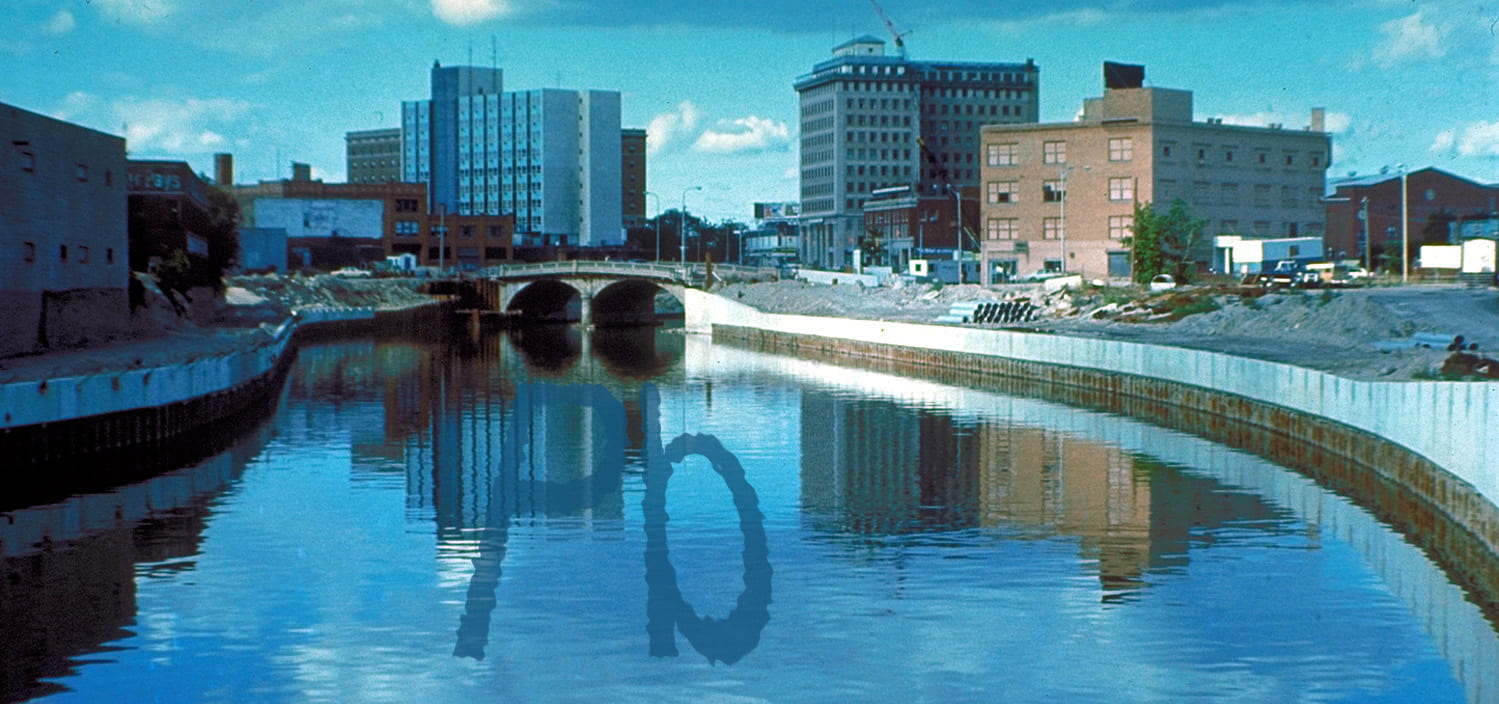What Everyone Deserves: Real-Time Water Data
The Flint water crisis alerted us to how little we know about our water.
When I joined Blue CoLab, I was amazed by the power and promise of real-time monitoring, a technology so innovative it can be used to protect people from unsafe drinking water.

Flint River flowing through Detroit, MI. Photo: US Army Corps of Engineers
We demonstrate its use daily with our monitoring station, Ada, which, every fifteen minutes, measures the temperature, dissolved oxygen, salinity, pH, and turbidity of the water in Choate pond on our Pace Pleasantville campus. I find it very cool and exciting that you can receive the latest measurements by texting “Ada” to 914-483-5900 – an “SMS-bot” created by Andrew Iadevaia, one of our team. Try to find the SMS-bot for your local drinking water system and you will probably be disappointed.
This idea of using real-time monitoring to protect water users clicked in my mind when Professor Cronin gave us a simple example. If you were to hand someone a glass of water and say, “Here, have a sip, but I’m not sure what is in it,” most likely, that person would not drink it. In fact, once you give it some thought, the very idea sounds ominous and not trustworthy. The point is we never actually know what is in our water, or know the quality of our water, BEFORE we drink it, even in our own homes or dormitories.
Most water consumers only receive this information after they have drunk hundreds of gallons of water, up to 17 months later — based on the reporting requirements of the United States Environmental Protction Agency. One of the most well-known cases of delayed information harming water consumers is the Flint Water Crisis, where acidic water contributed to lead contamination. The water quality parameter pH, a measurement of acidity, is one of those we collect every fifteen minutes from ur pond. Muc harmed caused by this tragedy could have been stopped, if access to real-time water data was available.
The current system for water monitoring and pollutant detection does not make sense and should be changed. If everyone could know their water data before drinking from the home tap, potential water disasters could be avoided – such as those 19.5 million people in the U.S. who experience gastrontestinal illnesses each year due to contaminated water.
So what would a system like this look like? First, sensors distributed throughout the water supply and delivery system, and then communicating that information to water users. Our SMS-bot is just one example. Everyone should be able to have such easy access to information about their local water source. Better yet, a reporting and warning system that alerts us through our mobile phones, in the same way we receive weather alerts. These sound simple, but are significant system-wide changes that would affect thousands of water systems and be costly.
But isn’t safe drinking worth any potential cost?
What then is the future of water quality monitoring, and what are some challenges of this technology? According YSI, one of the leading developers of real-time water sensors, some of the biggest challenges facing water quality monitoring include maintenance of the sensors, data accuracy, and efficiency of these sensors. The equipment used for water monitoring is costly and must be maintained to ensure that the information always remains accurate.
Perhaps the biggest challenge comes from the lack of government policies and funding to spur innovation. Real-time monitoring systems still do not exist for some of the most dangerous chemicals. Until drinking water regulations recognize the importance of providing water quality information in advance, the market for such innovations will be small.
I believe water laws will someday require real-time monitoring, so water users will have the ability to know the quality of water before they drink it. It is essential, even a public right, that this information be readily available to prevent crises such as Flint, Michigan from occurring again, and to protect the health of all water-drinking people – which is to say, all of us.
Paul Spadaccini

Paul Spadaccini ’22 is a Computer Science major in the Seidenberg School of Computer Science and Information Systems at Pace University.
Recent Posts
Bringing games to life at Blue CoLab
Every game begins with an idea. For we, the Game Dev Team of Blue CoLab, inspiration struck when we were challenged to make learning about water and technology fun and interactive. The journey from a simple idea to a fully functional game kiosk is complex and challenging, but immensely rewarding.
What can machine learning teach us about water that we don’t already know?
Traditional analyses cannot handle vast amounts of water data. Machine learning can uncover vital information about water that would otherwise go undetected.
The Dark Waters of Parkersburg, WV: A Warning to Us All
Advanced warning systems about drinking water contamination could save millions of people from exposure to dangerous contaminants.
Congress: Guarantee the Right-to-Know Drinking Water
Technology-based alerts are commonplace in daily life: storm alerts; car collisions; even asteroid near-misses. But not for water.

